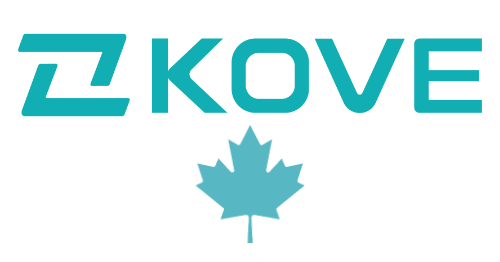
After more than 7,000 kilometres of Saudi Arabian sand dunes and rocky terrain, sleepless nights in a desert tent, new friendships forged and jokes cracked, an electric issue left him stuck in the sand and after all hope was lost, and then regained, a coal-mine worker and part-time dirt-bike racer from Pincher Creek, Alta. successfully crossed the finish line of the 2025 Dakar Rally.
In doing so, Jordan Strachan became one of only a handful of Canadians to ever complete the legendary and occasionally deadly Rally since it began in 1978.
“On the last stage, the first thing going through your head is ‘I got 80 kilometres and it’s over.’ And those were the worst 80 kilometres of my entire rally, because you’re so scared you’re gonna blow a motor, or gonna crash. Seeing the last crest of the final dunes, I’m like ‘Okay if anything happens I will take this bike apart and I will pack it on my shoulders. I’m gonna make it.’ But until then, you are worried,” said Strachan.
“When you finally cross that finish line, that’s when it becomes real. That’s when you realize you’re in the Dakar. You know, nothing sank in for me, the excitement – none of that sank in until I crossed that finish line where you’re going, ‘I just did it.’ Up until then you’re just a nervous wreck,” he said.
Canadian Jordan Strachan catches some air during the 2025 Dakar Rally.HELENACLANCY/Supplied
Strachan was welcomed back into Canada by family and friends who met him at the airport in Calgary. He was jet-lagged, sore and sleep deprived. “I’m still coughing up the dust,” he said. And, of course, the airline made getting all of his gear home a headache.
We spoke as he was driving from Calgary to Pincher Creek, a few days before his first night-shift back at the coal mine. With the jet-lag from Saudi Arabia, he joked, he’s already almost back on his usual schedule.
Stranded in the desert
Early in the two-week Rally – during the timed 48-Hour Chrono Stage – electrical issues with the add-on navigation equipment wired onto Strachan’s Kove Moto Canada 450 Rally bike left him stranded in the desert.Helena Clancy / Edophoto/Supplied
“It was rough,” he said with a sigh. Early in the two-week Rally – during the timed 48-Hour Chrono Stage – electrical issues with the add-on navigation equipment wired onto Strachan’s Kove Moto Canada 450 Rally bike left him stranded in the desert.
“We rode through big mountain passes. It was a really rocky stage. I was doing really well. I was pushing really hard. I was passing a lot of guys. I was gaining a lot of time back … And then we just started having issues. The bike kept dying before the first checkpoint area, which was next to a highway, where I ultimately ended up taking apart the bike. I had another guy jump-start me … Then the bike shut off and would not start again. I had a local pull me along the highway – I just kind of held onto the back of his Toyota Hilux – but the bike wouldn’t bump-start,” he recounted.
“I sat next to the highway, and I took all the [fuel] tanks off. I stripped the bike right down, tried to figure out what was going on. I found some blown fuses, so I replaced those. They’d blow again right away. So I replaced these fuses with wires so they can’t blow and then I deleted all the wiring to the tower [containing the tablet and other aftermarket navigation equipment]. I ran the tablet on what battery power I had left.
“The locals sat there with me for a couple hours, just watching me, trying to give me assistance. I didn’t want them to touch the bike, because I wasn’t sure if that would disqualify me, but they’d pass me a tool or a bolt … They gave me a boost, and I got going for another 60 kilometres. Then [it] ended up dying again out in the dunes. I waited for an hour out there for a bike to stop and boost me, but no one had any booster cables.
“Then I pulled some more wiring off the bike, just enough that I could make the makeshift booster cable. Another Kove rider stopped. We boosted my bike and we kind of followed each other all the way to the first gas stop … We were riding the last 40 kilometres of dunes in the dark. If it weren’t for the Saudi rider on another Kove, I wouldn’t have made it; he boosted me countless times,” said Strachan.
The devil, and a fix
Roughly halfway through the rally, the Kove team mechanics managed to fix the electrical issue. It turned out to be a problem inside the aftermarket navigation wiring harness itself.Irina Petrichei/Supplied
“You’ve got the devil on your shoulder man, going, ‘You can stop, you’re having electrical issues you can’t resolve. I can quit right now and be at peace with it, knowing that it wasn’t me that gave up.’ But, eventually you just go, ‘No. I’ve came too far. I’ve trained too hard. I pushed. I’m not giving up.’”
And Strachan didn’t. Electrical gremlins kept switching off the engine in the middle of nowhere, but other riders always stopped to help boost the bike.
“Every day I was losing an hour or two hours, minimum,” he said. “And then the big issues, where I was cutting the [wiring] harness and stuff, I was losing about four or five hours.”
At every point, other riders stopped to help and get him moving again. “That’s the Dakar,” Strachan said, “everybody wants you to get to the finish.”
Roughly halfway through the rally, the Kove team mechanics managed to fix the electrical issue. It turned out to be a problem inside the aftermarket navigation wiring harness itself; Strachan stressed that it was nothing to do with his Kove 450 bike.
“I feel like everything happens for a reason. I feel like a lot of the issues I had were meant to slow me down so that I could make it to the finish,” he said.
Mixed emotions and blue-collar know-how
Strachan stands on the podium after finishing the Dakar Rally. Some 335 vehicles, including 134 motorbikes, made it into the 2025 Dakar Rally. But after more than 7,000 kilometres and two weeks of racing, only 175 vehicles covered the entire distance to reach the finish line.Supplied
In his Instagram stories, there were videos of a cheerful Strachan lining up to start the day’s stage in a camouflaged onesie, which made him stand out from the other riders wearing superhero-style brightly-coloured motorcycle gear.
“Two days before I flew out [to Saudi Arabia] I zipped into Canadian Tire and grabbed a full onesie hunting suit. Everyone else was in these expensive [rally] suits … It was the best $117 I ever spent. It was double-XL so I could fit all my gear underneath. Without that I’d have be freezing my nuts off.”
Before it gets scorching hot in the desert, early mornings can be near freezing, Strachan said. The warm onesie was a last-minute addition to his Dakar kit.
“It was the talk of the bivouac,” he laughed. “I looked like I was going out for a duck hunt.”
The bivouac functions as the rally’s roving base camp. “These bivouacs, you can’t even explain it. It’s a city that moves,” Strachan said. “The place is huge. They’ve got helicopters taking off everywhere. I don’t even know how many helicopters … There’s side-by-side [dune buggies] getting worked on right next to you. The mechanics work all night. The factory teams (such as KTM and Honda and Kove) are stripping these bikes to the frame. And the rally organizers are working 24/7 as well.”
With all that activity and noise going on all around, he wasn’t getting much sleep, maybe eight or nine hours total over the first three days, he estimates.
“You’re working on [the bike] until midnight and up at 4 or 5 a.m. to go on your liaison to start the race.” By stage nine he was so burnt out he relented and hired a mechanic to prep his bike after every stage. It cost him around €5,000 ($7,500). “After all the issues we had, I needed help now,” Strachan says. “I needed to sleep. I needed to finish.”
Rallying – Dakar Rally – Stage 1 – Bisha to Bisha – Saudi Arabia – January 4, 2025 Kove Canada’s Jordan Strachan crashes during stage 1 REUTERS/Maxim ShemetovMaxim Shemetov/Reuters
In a race where so many competitors never get to the finish line, making it to the end is a massive accomplishment, especially for a Dakar rookie.
Some 335 vehicles, including 134 motorbikes, made it into the 2025 Dakar Rally. But after more than 7,000 kilometres and two weeks of racing, only 175 vehicles covered the entire distance to reach the finish line. Strachan was one of 77 motorcycle riders that made it. “I was, I think, 11th overall [among] the rookies,” he said.
“I’ve got a lot of friends, lifelong friends now, that have done the Dakar 15 times, and they said [the 2025 race] was the hardest one they’ve ever done. It was hard on bikes and hard on your body. It just never ended,” said Strachan.
“If I didn’t have that mechanical background, that blue-collar background, if it weren’t for me being a farmer, a rancher or a millwright, a coal miner, a welder – having a little bit of everything – I don’t think I would have finished,” Strachan said.
Just another 100 kilometres, he kept telling himself, and then another 100, and another.
“I’ve got such mixed emotions, man. It’s so cool to be a finisher, and a pretty big honour to represent Canada and bring back a cool story … But the racer inside me, I know where I could’ve been (if not for the electrical issues). It eats away at me a little bit…. In the future maybe I’d go back and push,” Strachan said.
“It’s hard to put into words,” he added.
For this coming year, his first priority is figuring out his living situation. Apart from where he stays while working at the mine, he has been couch surfing. After he has a proper place to live, he’ll start thinking about getting back to the Dakar, he said.
In the meantime, Strachan extended an invite to anyone wanting to learn about the Dakar Rally, or off-road riding and rally navigation to get in touch. He’s planning to run some rally-riding courses this year for anyone interested.
Canadian Jordan Strachan endures the sand dunes of Saudi Arabia during the 2025 Dakar Rally.Helena Clancy / Edophoto/Supplied







